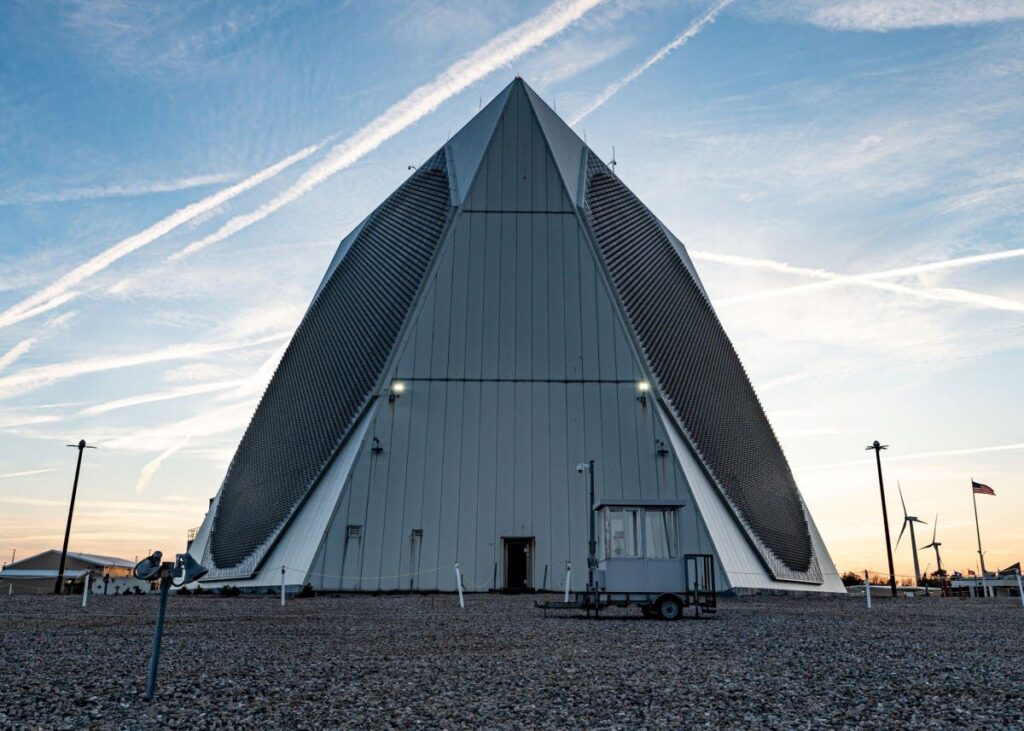The United States plans to upgrade its radars to improve their ability to identify hostile ballistic missiles targeting the homeland, according to a government announcement, as nuclear adversaries Russia, China and North Korea advance their missile capabilities.
Newsweek has emailed the Russian and Chinese foreign ministries for comment. North Korea’s embassy in Beijing did not immediately respond to a request for comment.
Why It Matters
Advocated by President Donald Trump, the U.S. is developing the “Golden Dome for America” missile defense initiative to defend against all kinds of aerial attacks—the most catastrophic threat the country faces, the White House said—including hypersonic missiles that fly more than five times the speed of sound and are difficult to intercept.
Russia, China and North Korea possess missiles capable of launching nuclear strikes on the U.S., according to a Defense Intelligence Agency assessment. The U.S. homeland is protected by the Ground-Based Midcourse Defense system; however, it is intended to defeat limited, but not large and sophisticated, intercontinental ballistic missile attacks.
What To Know
A request for information (RFI) by the U.S. Missile Defense Agency was published on the System for Award Management—an official U.S. government website—on October 3, seeking a software upgrade for Upgraded Early Warning Radars (UEWR).
The upgrade, known as Advanced Object Classification (AOC) 1.1, aims to improve the radar’s classification of objects in the midcourse phase of ballistic missile flight by incorporating additional algorithm updates and enhancements beyond AOC 1.0.
The midcourse is one of the three phases of ballistic missile flight, along with the boost phase and the terminal phase. During the midcourse, which can last up to 20 minutes, the missile is vulnerable, as the phase provides several opportunities to destroy it.
The UEWR consists of five radars in Alaska, California, Massachusetts, Greenland and the United Kingdom, according to the U.S. Missile Defense Agency. They are designed to detect and track ballistic missiles launched from the ground and from submarines.
These radars have 240 to 360-degree coverage and can detect objects up to 3,000 miles away. They provide critical early-warning and tracking data for the launch of missile interceptors and for updating target tracks while a missile interceptor is in flight.
The ability to classify an object in flight is key to missile defense. Countries can deploy decoys to overwhelm missile defenses during the midcourse phase, allowing warheads to reach targets, according to the Center for Arms Control and Non-Proliferation.
In addition to decoys and other countermeasures, missile interceptors must correctly identify the real threat—warheads—among debris to ensure they intercept the target.
Ankit Panda, a nuclear expert at the Carnegie Endowment for International Peace, said in a 2021 article that the U.S. Missile Defense Agency planned to deploy four missile interceptors against every incoming warhead, also known as a re-entry vehicle.
What People Are Saying
A U.S. defense official said in a statement to Newsweek in September: “The Golden Dome for America office is examining current and future solutions across the services and interagency to identify the most effective ways to modernize and quickly field the capabilities our nation needs to protect our Homeland.”
The U.S. Defense Intelligence Agency wrote in an assessment: “Missile threats to the U.S. homeland will expand in scale and sophistication in the coming decade. China and Russia are developing an array of novel delivery systems to exploit gaps in current U.S. ballistic missile defenses … North Korea has successfully tested ballistic missiles with sufficient range to reach the entire Homeland.”
What Happens Next
It remains unclear whether the U.S. military will further upgrade its missile defense systems amid growing threats from Russia, China and North Korea.
Read the full article here

